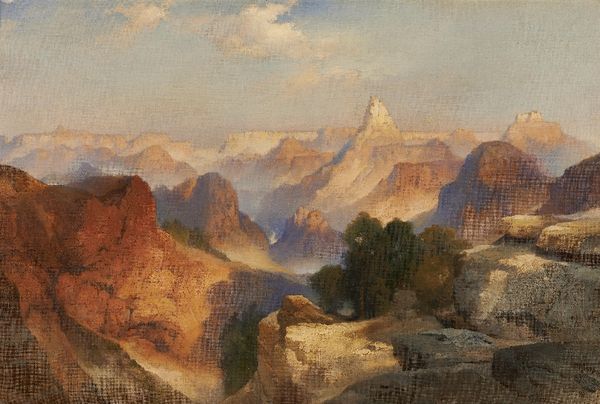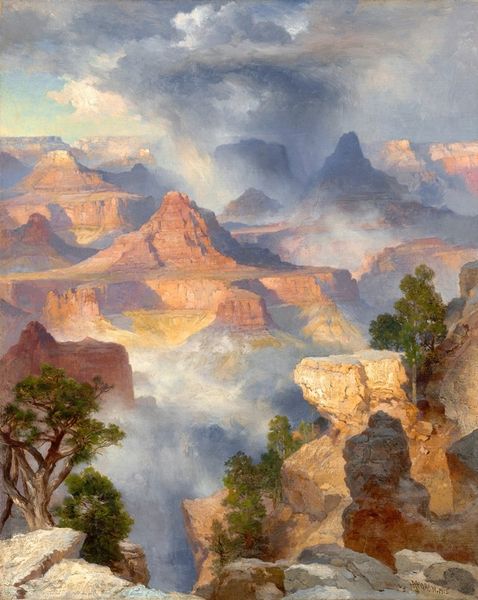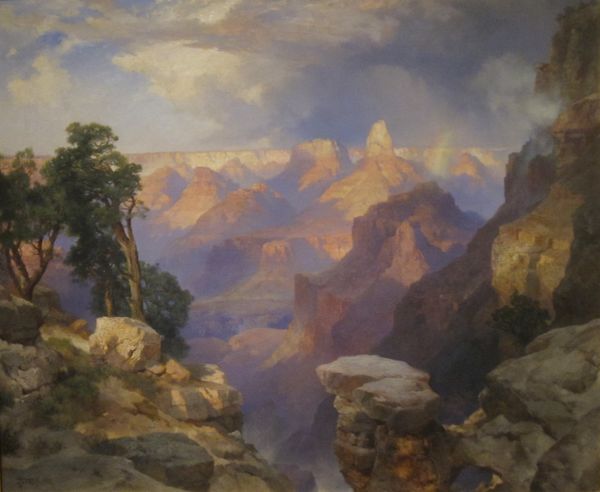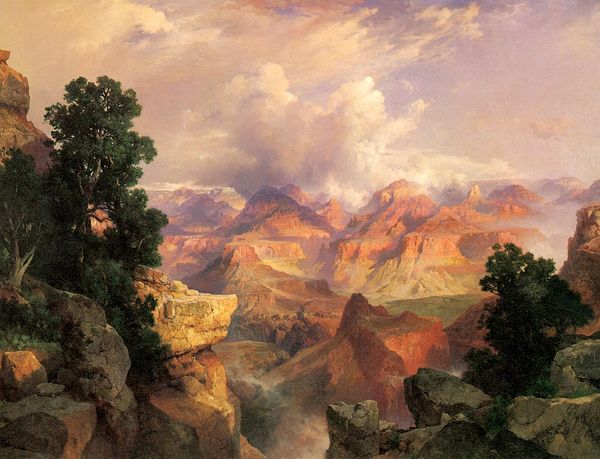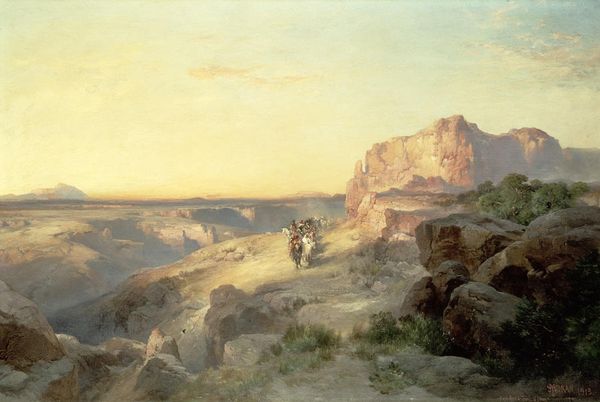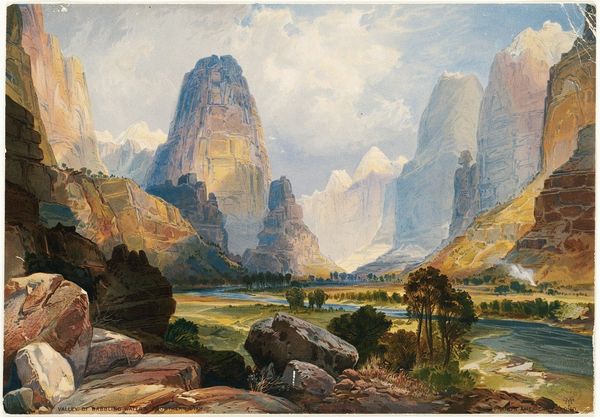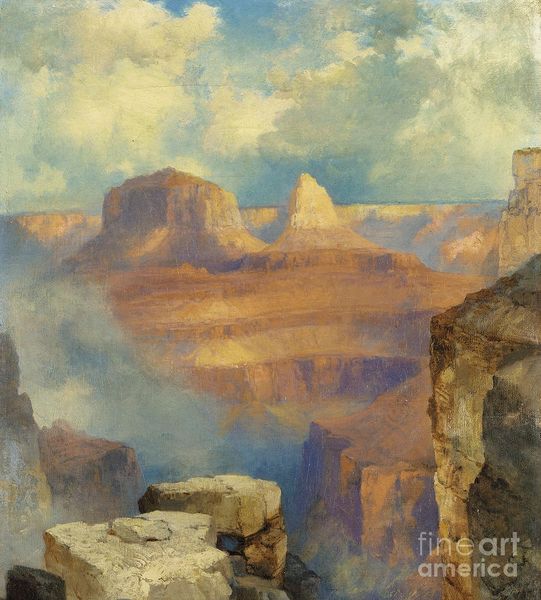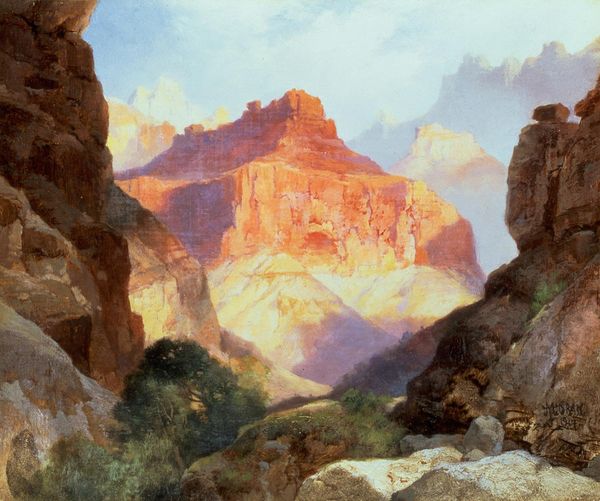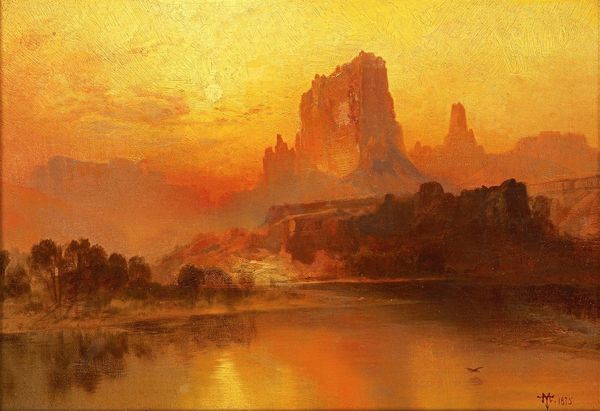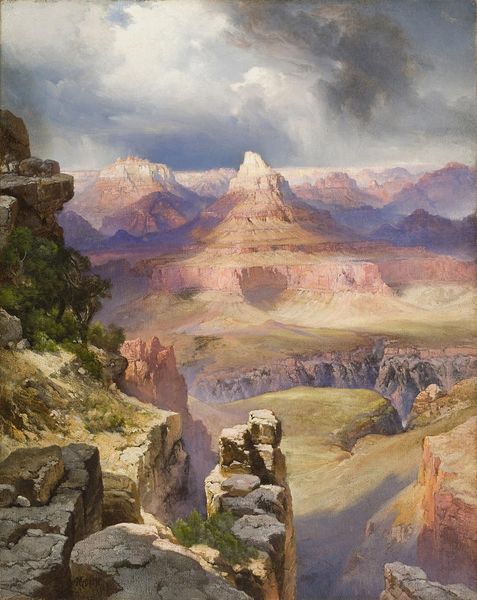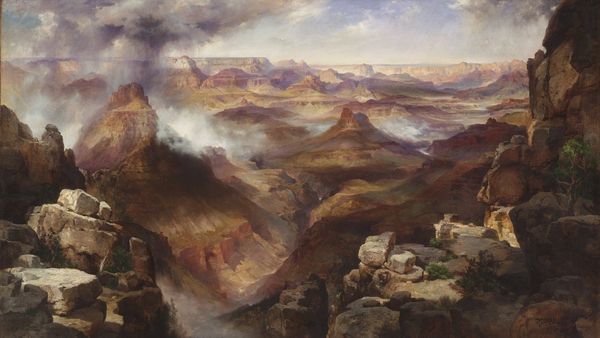
Copyright: Public Domain: Artvee
Thomas Moran painted "Zoroaster Peak," an oil on canvas, during a time when the American West was being mythologized and romanticized. Moran's work needs to be understood within the context of settler colonialism. While his paintings celebrated the sublime beauty of the American landscape, they often erased the presence and history of indigenous peoples. Moran’s artistic choices served the expansionist agenda of the United States. The Grand Canyon, depicted here, was transformed into a symbol of American identity and Manifest Destiny. Yet this representation sidesteps the complex and violent history of westward expansion, obscuring the displacement and cultural genocide of Native communities. His landscapes invited viewers to imagine themselves as pioneers, overlooking the violence required to stake claim to the land. While visually stunning, the painting serves as a reminder of the narratives that have been historically privileged, and those that have been suppressed in the construction of American identity.
Comments
No comments
Be the first to comment and join the conversation on the ultimate creative platform.
